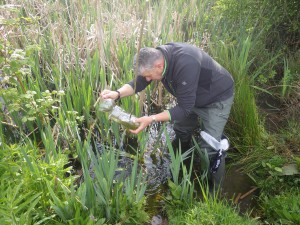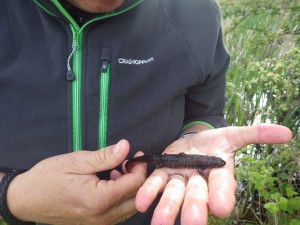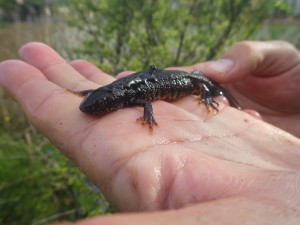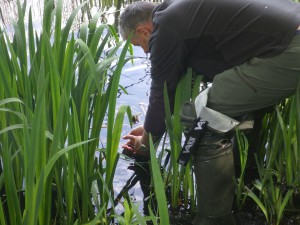Hi my name is Roy Leigh, I am a consultant ecologist and have a practice in Cheshire, England. I am also an ornithologist and in my spare time I monitor owls and raptors, I hope to tell you more about this in future blogs.
As you will expect, spring is a very busy time of the year for an ecologist – with habitat, amphibian, breeding bird and bat surveys all being undertaken.
My job requires me to survey protected species of flora and fauna in order to establish their presence and population in order to inform planning applications. If they are present, I will develop a strategy that will safeguard the species during and after the proposed development. As you would expect all sorts of survey methods are required in order to find species, which are often quite elusive!
My life at the moment is dominated by newt surveys; great crested newts are highly protected as they are in decline across Europe.
However, in Britain we are blessed with a good population due to the high number of ponds that occur in our garden and agricultural landscapes.
This is not to say that they aren’t still under threat of course! I am sure that you will have seen the lengths of polythene fencing that prevent newts entering development sites or new roads etc…
Back to my surveys! Newts enter ponds to breed, therefore in order to survey for them I also have to go into their habitat, ponds!
We use a number of methods to survey for newts and a method which is very effective, is bottle trapping.

To set the bottle traps we have to wade into ponds and submerge the trap in the pond water, fixed in place with a cane. These are set late in the evening and then left overnight. As newts tend to be mainly nocturnal the best period for trapping them is while we are in bed!!!
After an early start, I return to the pond and remove the traps, and see what has been caught in my traps. We always return early to traps, in order to minimise any stress for the newts. When we catch the newts we identify the species (in the UK we have three species of newt Smooth, Great Crested and Palmate) see what sex it is, then release it back to the pond to get on with its life!



We also search ponds for newt eggs, undertake torch surveys at night in order to see any displaying newts in ponds, and sometimes net ponds with pond dipping nets as a last resort.
My work requires good kit; kit that is hard wearing, keeps me warm and dries fast. The Craghopper fleeces and trousers I live in do just this, for long days in extreme conditions they work superbly.